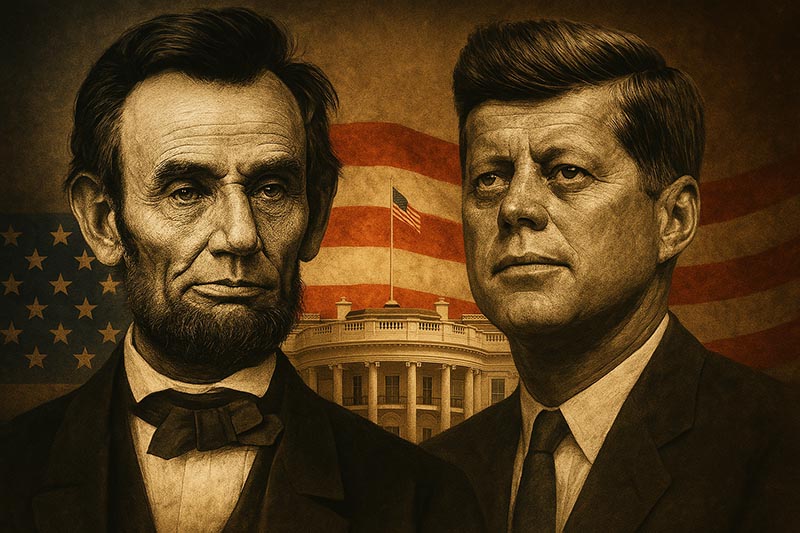
Did you know that Abraham Lincoln and John F. Kennedy, two of America’s most iconic leaders, share a series of uncanny similarities? Lincoln won the election in 1860 and was inaugurated on March 4, 1861, while Kennedy won his election in 1960 and took office on January 20, 1961. Both men faced tragic ends, with Lincoln shot in Ford’s Theatre and Kennedy in a Lincoln car made by Ford. These eerie connections are just the tip of the iceberg.
Presidential history is filled with fascinating stories that often go unnoticed. From elections and inaugurations to tragic events, the parallels between leaders are both surprising and thought-provoking. These coincidences not only highlight the quirks of history but also offer a deeper understanding of the lives and legacies of these influential figures.
This article dives into the lesser-known details of American leaders, blending historical facts with intriguing parallels. You’ll discover how these connections shape our understanding of the past and why they continue to captivate us today. Get ready for a journey through time, filled with surprising tidbits and unexpected twists.
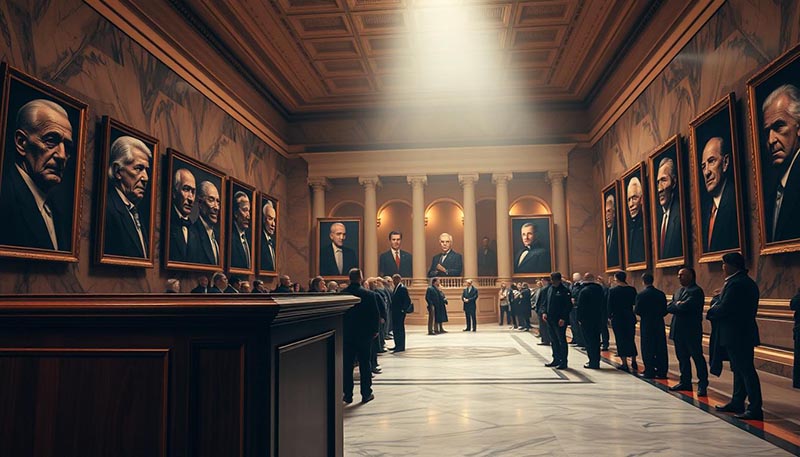
Key Takeaways
- Abraham Lincoln and John F. Kennedy share remarkable similarities in their lives and deaths.
- Presidential history is rich with fascinating and often overlooked stories.
- Elections and inaugurations often reveal unexpected parallels between leaders.
- Tragic events in presidential history highlight the fragility of leadership.
- Understanding these connections offers deeper insights into American history.
- Introduction: Unveiling Extraordinary Presidential Coincidences
- Historical Context: America’s Rich Presidential Heritage
- Presidential Election Surprises and Inaugural Oddities
- Unbelievable Assassination Coincidences
- Intriguing Family Ties and Legacy Coincidences
- Uncommon Hobbies and Personal Traits of U.S. Presidents
- Peculiar Presidential Security and Secret Service Lapses
- Weird Facts and Their Impact on History
- Strange Coincidences in Presidential Inaugurations
- 10 Coincidences Between U.S. Presidents That Will Blow Your Mind
- Hidden Connections in Presidential Legacies
- Cultural and Political Implications of Presidential Coincidences
- Presidential Moments That Changed American History
- The Mysterious World of Unlikely Historical Parallels
- Exploring Presidential Myths and Misconceptions
- Conclusion
- FAQ
- What are some surprising coincidences between Abraham Lincoln and John F. Kennedy?
- Did Thomas Jefferson and John Adams share any unusual connections?
- Are there any strange parallels in the lives of U.S. presidents and their families?
- What are some odd facts about presidential inaugurations?
- Were there any unusual hobbies or traits among U.S. presidents?
- What are some lesser-known security lapses involving U.S. presidents?
- How did presidential coincidences impact American history?
- Are there any myths about U.S. presidents that have been debunked?
- What are some hidden connections between presidential legacies?
- How did peculiar presidential moments change American history?
Introduction: Unveiling Extraordinary Presidential Coincidences
History is filled with moments that seem too strange to be true, especially in the lives of U.S. leaders. These extraordinary coincidences often reveal surprising connections between events, people, and even tragedies. From elections to personal quirks, the stories of American presidents are a blend of hard facts and quirky trivia that captivate our imagination.
Take, for example, the eerie parallels between Abraham Lincoln and John F. Kennedy. Both men were elected in years ending with “60” and faced tragic assassinations. Lincoln’s assassin, John Wilkes Booth, was born in 1839, while Kennedy’s killer, Lee Harvey Oswald, was born in 1939. These details are just the beginning of a long list of fascinating overlaps.
But it’s not just about assassinations. The world of American leadership is brimming with peculiar stories. Did you know that Thomas Jefferson and John Adams, two founding fathers, died on the same day—July 4, 1826? This day also marked the 50th anniversary of the Declaration of Independence. Such moments remind us how deeply intertwined history can be.
Here’s a quick look at some of the most intriguing coincidences in presidential history:
| President | Coincidence |
|---|---|
| Abraham Lincoln | Elected in 1860, assassinated in Ford’s Theatre. |
| John F. Kennedy | Elected in 1960, assassinated in a Lincoln car. |
| Thomas Jefferson & John Adams | Both died on July 4, 1826, the 50th anniversary of Independence. |
These stories are more than just curiosities—they offer a deeper understanding of the lives and legacies of these influential figures. Whether it’s a shared date, a similar event, or an odd personal detail, these coincidences remind us that history is full of surprises. So, let’s dive into the fascinating world of American leadership and uncover the hidden connections that shape our past.
Historical Context: America’s Rich Presidential Heritage
The journey of American leadership is a tapestry woven with pivotal moments and unexpected turns. From the founding fathers to modern leaders, each president has left an indelible mark on the nation’s history. Understanding this heritage helps us appreciate the complexities of leadership and the quirks of fate that shape our world.
Setting the Timeline for Presidential Legacies
American presidential history spans over two centuries, marked by eras of growth, conflict, and transformation. The early years saw leaders like George Washington and Thomas Jefferson laying the foundation for a new nation. The Civil War era brought figures like Abraham Lincoln, whose leadership during a tumultuous time remains legendary.
The 20th century introduced leaders who navigated global challenges, from World War I to the Cold War. Each president faced unique trials, yet their stories often intersect in surprising ways. For example, both Lincoln and John F. Kennedy were elected in years ending with “60,” a curious coincidence that underscores the cyclical nature of history.
Key Historical Moments to Know
Certain events have become bedrocks of national memory. The election of 1860, which brought Lincoln to power, was a turning point in American history. Similarly, Kennedy’s inauguration in 1961 marked the beginning of a new era of hope and innovation.
Here’s a quick look at some of the most significant moments in presidential history:
| Year | Event | President |
|---|---|---|
| 1860 | Lincoln’s Election | Abraham Lincoln |
| 1961 | Kennedy’s Inauguration | John F. Kennedy |
| 1945 | End of World War II | Harry S. Truman |
These moments not only define individual presidencies but also shape the broader narrative of the United States. By exploring these events, we gain a deeper understanding of how history repeats itself in curious and meaningful ways.
Presidential Election Surprises and Inaugural Oddities
The inaugurations of Abraham Lincoln and John F. Kennedy hold more in common than meets the eye. These two leaders, separated by a century, faced unique challenges and left indelible marks on American history. Their elections and inaugurations were filled with surprises, oddities, and moments that continue to captivate us today.
Lincoln’s and Kennedy’s Inaugurations Compared
Abraham Lincoln took office on March 4, 1861, during a time of deep division. His inauguration marked the beginning of a tumultuous period in American history. John F. Kennedy, on the other hand, was sworn in on January 20, 1961, ushering in an era of hope and change. Both men faced fierce competition in their elections, with Lincoln defeating John C. Breckenridge and Kennedy narrowly edging out Richard Nixon.
Here’s a closer look at the parallels between their inaugurations:
| President | Inauguration Date | Runner-Up | Key Details |
|---|---|---|---|
| Abraham Lincoln | March 4, 1861 | John C. Breckenridge | Marked the start of the Civil War era. |
| John F. Kennedy | January 20, 1961 | Richard Nixon | Symbolized a new frontier in American politics. |
These events were more than just ceremonies. They were turning points that shaped the nation’s future. Lincoln’s inauguration came at a time of national crisis, while Kennedy’s speech inspired a generation with his famous words: “Ask not what your country can do for you—ask what you can do for your country.”
The public reaction to both inaugurations was intense. Lincoln faced threats to his security, while Kennedy’s youthful energy captivated the nation. Media coverage of these events highlighted the stark differences in time and circumstance, yet the underlying themes of leadership and resilience remain timeless.
These stories remind us that presidential inaugurations are not just formalities. They are moments of history, filled with surprises and oddities that continue to fascinate us. From the challenges of the past to the hopes for the future, these events offer a glimpse into the lives of the men who shaped America.
Unbelievable Assassination Coincidences
The assassinations of Abraham Lincoln and John F. Kennedy are among the most shocking events in American history. These two leaders, separated by a century, met tragic ends that continue to captivate the public. The circumstances surrounding their deaths are filled with eerie coincidences, making their stories unforgettable.
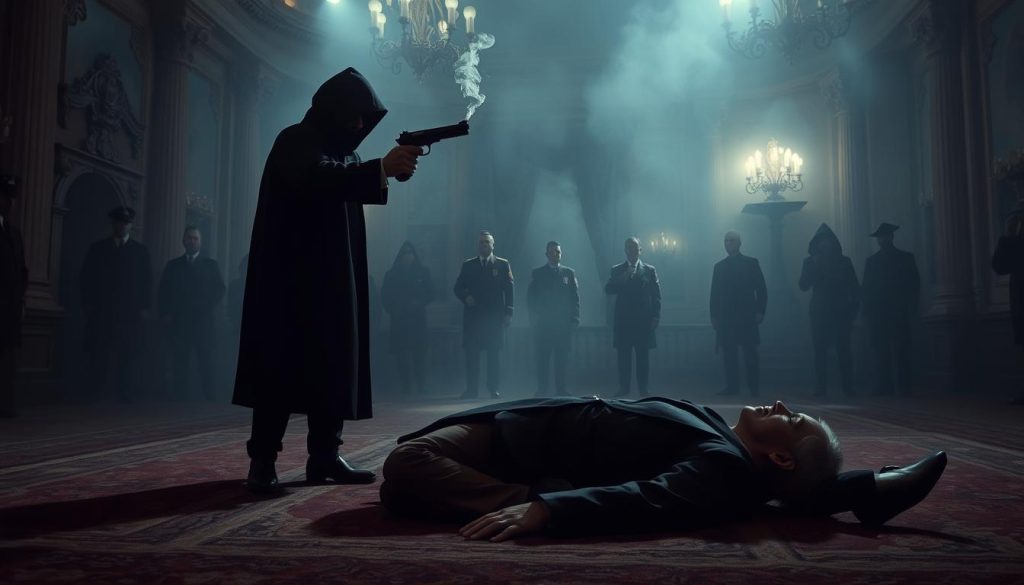
Exploring Lincoln’s Tragic Fate
Abraham Lincoln was shot on April 14, 1865, while attending a play at Ford’s Theatre. The man responsible, John Wilkes Booth, was a well-known actor with strong Confederate sympathies. Lincoln’s death marked the end of a year that saw the conclusion of the Civil War, yet it also left the nation in mourning.
What makes this story even more chilling is the connection to Kennedy’s assassination. Lincoln was killed in a theatre named Ford, while Kennedy was shot in a car made by Ford—a Lincoln Continental. This bizarre link adds another layer of intrigue to their shared history.
The Shadow Over Kennedy’s Legacy
John F. Kennedy was assassinated on November 22, 1963, in Dallas, Texas. His killer, Lee Harvey Oswald, was a former Marine with a troubled past. Kennedy’s death shocked the world, as he was a symbol of hope and progress during a turbulent time in American history.
Just like Lincoln, Kennedy’s assassination is surrounded by strange details. The fact that both men were killed in vehicles connected to the Ford brand is a curious coincidence. These parallels have led many to wonder if there’s more to their stories than meets the eye.
| President | Date of Assassination | Location | Key Detail |
|---|---|---|---|
| Abraham Lincoln | April 14, 1865 | Ford’s Theatre | Killed by John Wilkes Booth. |
| John F. Kennedy | November 22, 1963 | Dallas, Texas | Shot in a Ford-made Lincoln car. |
These tragic events left a lasting impact on the nation. Lincoln’s death came at a time of healing after the Civil War, while Kennedy’s assassination marked the end of an era of optimism. Both men are remembered not just for their leadership but also for the untimely nature of their deaths.
Their stories remind us of the fragility of life and the unpredictability of history. The connections between their assassinations continue to fascinate historians and the public alike, offering a glimpse into the strange twists of fate that shape our world.
Intriguing Family Ties and Legacy Coincidences
Family ties have played a surprising role in shaping American leadership. From fathers to sons, the presidency has seen its share of remarkable legacies. These connections often reveal fascinating stories that go beyond the public eye.
One of the most notable examples is the Adams family. John Adams, the second president, and his son, John Quincy Adams, the sixth, both left indelible marks on the nation. Their shared commitment to public service highlights how familial bonds can influence political careers.
Father-Son Presidential Journeys
The Adams duo is just one example of father-son legacies in American history. Their story is a testament to the power of heritage in shaping leadership. John Quincy Adams followed in his father’s footsteps, driven by a sense of duty and a desire to uphold the family’s legacy.
Other presidents also have intriguing family connections. For instance, George H.W. Bush and George W. Bush are another father-son pair who served as president. Their shared experiences in office offer a unique perspective on how family ties can influence leadership styles.
- John Adams and John Quincy Adams: A pioneering father-son duo in American politics.
- George H.W. Bush and George W. Bush: The only other father-son pair to hold the presidency.
- Benjamin Harrison: Grandson of William Henry Harrison, the ninth president.
These connections are more than just coincidences. They reflect the enduring impact of family on the nation’s leadership. Whether through shared values or a sense of duty, these bonds have shaped the course of American history.
Exploring these stories offers a deeper understanding of the person behind the presidency. It reminds us that leadership is often a family affair, with each generation building on the legacy of the last. So, the next time you think about the presidency, consider the fascinating family ties that have shaped it.
Uncommon Hobbies and Personal Traits of U.S. Presidents
Beyond their political roles, U.S. presidents have often had surprising hobbies and personal quirks. These traits reveal a human side to these iconic figures, making them more relatable and intriguing. From athletic prowess to unexpected talents, their hobbies often shaped their public personas in unique ways.
From Modeling to Athletic Prowess
Abraham Lincoln, known for his leadership during the Civil War, was also a skilled wrestler in his younger years. He reportedly lost only one match out of nearly 300, earning a reputation as a formidable competitor. This fact adds a layer of grit to his story, showing that even the most serious leaders had light-hearted passions.
Another surprising example is Gerald Ford, who worked as a fashion model during his college years. His athletic abilities extended to football, where he played at the University of Michigan. These experiences not only shaped his character but also gave him a unique edge in connecting with the public.
Here are some other presidents with unusual hobbies:
- Theodore Roosevelt: An avid boxer and outdoorsman, he even practiced jiu-jitsu in the White House.
- Jimmy Carter: A passionate woodworker who often crafted furniture in his spare time.
- George W. Bush: Known for his love of painting, which he took up after leaving office.
These hobbies remind us that presidents are multifaceted individuals with diverse interests. Whether it’s Lincoln’s wrestling or Ford’s modeling, these quirks add depth to their legacies. They show that even the most powerful leaders had moments of creativity, athleticism, and fun.
Exploring these personal traits offers a glimpse into the lives of these influential figures. It’s a reminder that behind every president is a person with unique passions and talents. These stories enrich our understanding of their history and make their legacies even more fascinating.
Peculiar Presidential Security and Secret Service Lapses
Presidential security has seen its share of bizarre and unexpected moments. From plane crashes to unexpected breaches, the story of protecting the president is filled with odd twists and turns. These incidents not only highlight the challenges of safeguarding the nation’s leader but also reveal the human side of security protocols.
One of the most unusual events occurred in 1994, when a small plane crashed on the White House lawn. The pilot, who was not authorized to enter the airspace, managed to bypass security measures. This incident raised questions about the effectiveness of the Secret Service and led to significant changes in airspace monitoring.
Another notable lapse happened in 2014, when an intruder scaled the White House fence and made it deep into the building before being apprehended. This breach shocked the public and prompted a thorough review of security protocols. It was a stark reminder that even the most secure locations are not immune to human error.
These incidents have had a lasting impact on public perceptions of presidential safety. While the Secret Service is tasked with protecting the president, these lapses show that no system is foolproof. However, they also highlight the importance of learning from mistakes and continuously improving security measures.
Here are some key moments in presidential security history:
- 1994 Plane Crash: A small plane breached White House airspace and crashed on the lawn.
- 2014 Intruder: An individual scaled the fence and entered the White House unnoticed.
- 1981 Assassination Attempt: Ronald Reagan was shot outside a hotel, leading to enhanced protective measures.
These events, while unsettling, have driven advancements in security technology and protocols. They serve as a reminder that even the most powerful leaders are vulnerable, and that constant vigilance is essential. The coincidence of these lapses occurring in different years underscores the ongoing challenges faced by those tasked with protecting the president.
Despite these incidents, the Secret Service remains a cornerstone of presidential safety. Their ability to adapt and improve in the face of adversity is a testament to their dedication. These stories, though peculiar, are an important part of the history of American leadership.
Weird Facts and Their Impact on History
The White House has been a hub of both groundbreaking innovations and quirky tales throughout its history. From technological advancements to peculiar habits, these moments have left a lasting mark on American culture and leadership.
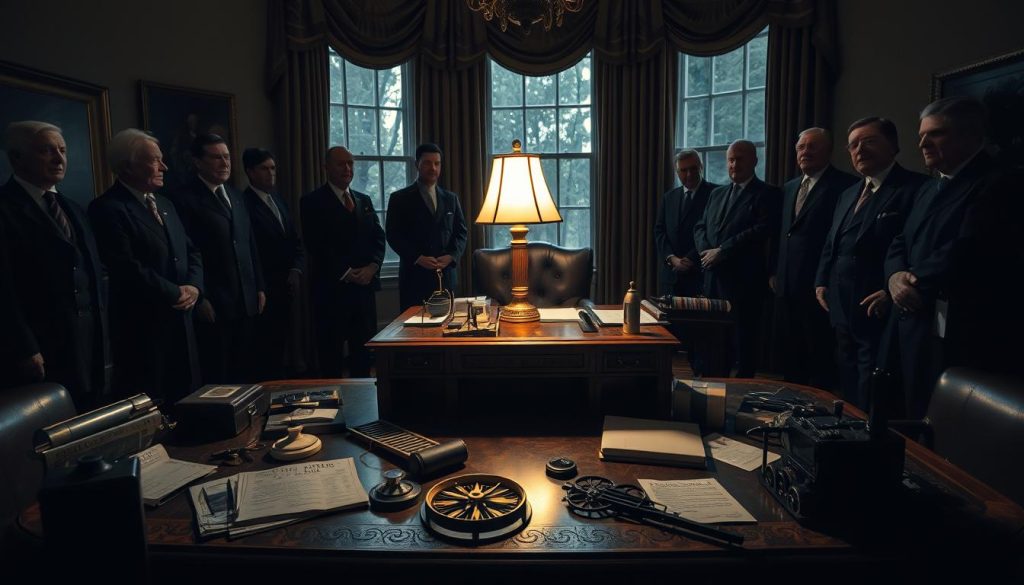
Innovations and Oddities in the White House
One of the most significant innovations in the White House was the introduction of electricity during Benjamin Harrison’s presidency in 1891. While Harrison was wary of the new technology, his administration marked the beginning of a modern era. This fact highlights how even small changes can shape the future.
Another memorable story involves William Howard Taft and his oversized bathtub. Taft, who weighed over 300 pounds, required a custom-made tub to accommodate his size. This quirky detail not only humanizes the president but also reflects the evolving needs of those in power.
Here are some other unusual facts that have influenced history:
- Thomas Jefferson introduced ice cream to the White House, a treat that became a national favorite.
- John Quincy Adams kept an alligator as a pet, showcasing his eccentric side.
- Harry S. Truman renovated the White House in 1948, ensuring its structural integrity for future generations.
These anecdotes are more than just curiosities. They offer a glimpse into the lives of those who shaped the nation. Whether it’s a technological leap or a personal quirk, these moments remind us that history is full of surprises.
By exploring these coincidences and oddities, we gain a deeper understanding of the people behind the presidency. These stories not only entertain but also reveal the human side of leadership, making history more relatable and engaging.
Strange Coincidences in Presidential Inaugurations
Presidential inaugurations often carry more significance than meets the eye. These ceremonies, marking the start of a new leadership era, are filled with unexpected parallels. Abraham Lincoln and John F. Kennedy, two iconic presidents, share uncanny similarities in their inauguration stories.
Lincoln was inaugurated on March 4, 1861, during a time of national division. Kennedy took office on January 20, 1961, symbolizing a new frontier. Both men faced intense challenges, yet their inaugurations became defining moments in American history.
Here’s a closer look at the parallels:
| President | Inauguration Date | Key Detail |
|---|---|---|
| Abraham Lincoln | March 4, 1861 | Marked the start of the Civil War era. |
| John F. Kennedy | January 20, 1961 | Ushered in an era of hope and change. |
These inaugurations were more than just ceremonies. They were turning points that shaped the nation’s future. Lincoln’s speech emphasized unity, while Kennedy inspired with his famous words: “Ask not what your country can do for you—ask what you can do for your country.”
The public reaction to both events was intense. Lincoln faced threats to his security, while Kennedy’s youthful energy captivated the nation. These facts highlight how inaugurations reflect the challenges and hopes of their year.
These coincidences raise questions about fate and timing. Were these parallels mere chance, or do they reveal deeper connections in American history? By exploring these moments, we gain a richer understanding of the lives and legacies of these influential leaders.
10 Coincidences Between U.S. Presidents That Will Blow Your Mind
The lives of U.S. leaders are filled with moments that defy explanation, leaving us in awe of history’s quirks. From elections to tragic events, these coincidences reveal surprising connections that continue to captivate us. Here are ten of the most mind-boggling facts about American presidents.
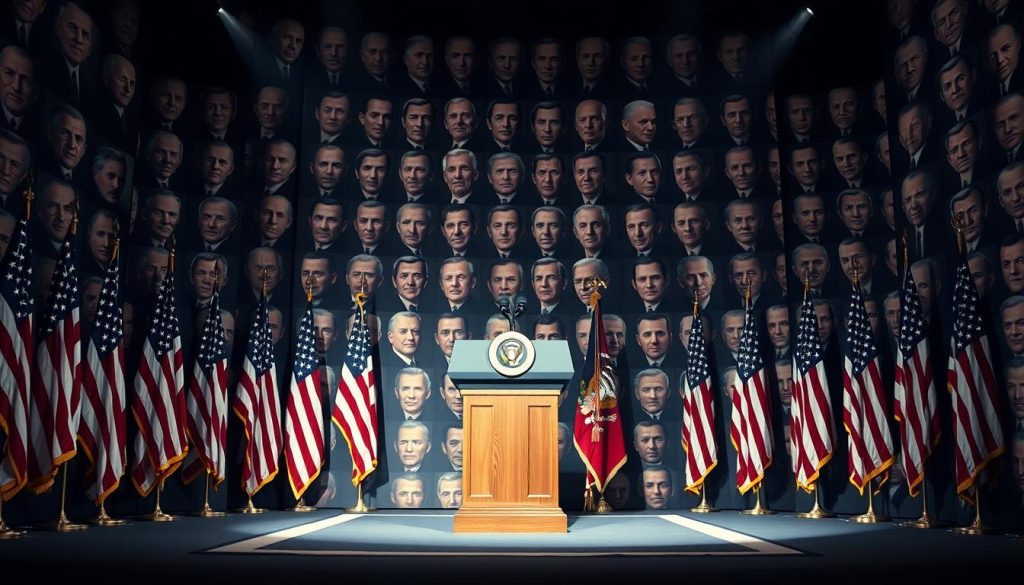
Highlighting the Most Mind-Boggling Facts
- Election Years: Abraham Lincoln and John F. Kennedy were both elected in years ending with “60”—1860 and 1960, respectively.
- Assassination Parallels: Lincoln was shot in Ford’s Theatre, while Kennedy was assassinated in a Lincoln car made by Ford.
- Birth Years of Assassins: Lincoln’s killer, John Wilkes Booth, was born in 1839, and Kennedy’s assassin, Lee Harvey Oswald, was born in 1939.
- Death Dates: Thomas Jefferson and John Adams died on the same day—July 4, 1826, the 50th anniversary of the Declaration of Independence.
- Father-Son Legacies: John Adams and John Quincy Adams were the first father-son duo to serve as president.
- Inauguration Oddities: Lincoln’s inauguration in 1861 marked the start of the Civil War, while Kennedy’s in 1961 symbolized a new era of hope.
- Security Lapses: Both Lincoln and Kennedy faced significant security challenges during their presidencies.
- Family Ties: George H.W. Bush and George W. Bush are the only other father-son pair to hold the presidency.
- Uncommon Hobbies: Lincoln was a skilled wrestler, while Gerald Ford worked as a fashion model before entering politics.
- White House Innovations: Benjamin Harrison was the first president to have electricity in the White House, yet he was hesitant to use it.
These stories remind us that history is full of surprises. Whether it’s a shared date, a similar event, or an odd personal detail, these coincidences continue to fascinate and inspire. They offer a deeper understanding of the lives and legacies of these influential figures, making their story even more compelling.
Hidden Connections in Presidential Legacies
Behind the scenes of American leadership, hidden threads connect presidents in unexpected ways. These links, often overlooked, reveal how history weaves intricate patterns across generations. From distant relatives to shared experiences, the legacies of U.S. leaders are more intertwined than we might realize.
One fascinating example is the Adams family. John Adams, the second president, and his son, John Quincy Adams, the sixth, both left indelible marks on the nation. Their shared commitment to public service highlights how familial bonds can shape political careers. This fact underscores the enduring influence of family in American leadership.
Unexpected Links Through Time
Beyond the Adams duo, other presidents share surprising connections. For instance, George H.W. Bush and George W. Bush are the only other father-son pair to hold the presidency. Their shared experiences in office offer a unique perspective on how family ties can influence leadership styles.
Here are some lesser-known connections that bind presidential legacies together:
- Benjamin Harrison: Grandson of William Henry Harrison, the ninth president.
- Franklin D. Roosevelt: Distantly related to Theodore Roosevelt, his fifth cousin.
- James Madison and Zachary Taylor: Both were second cousins, though their political paths diverged.
These subtle historical trends reveal intricate links among leaders. They remind us that American political culture is shaped not just by individual achievements but also by the relationships and legacies that span generations.
Analyzing these hidden connections offers a deeper understanding of the story behind the presidency. It shows how history repeats itself in curious and meaningful ways, leaving us with a richer appreciation of the past.
Cultural and Political Implications of Presidential Coincidences
The strange parallels in presidential history often spark cultural and political debates. These coincidences, whether eerie or intriguing, shape how we perceive leadership and its role in society. They also influence public opinion, creating narratives that resonate across generations.
One notable example is the recurring theme of election years ending in “60.” Abraham Lincoln and John F. Kennedy, both elected in such years, faced tragic fates. This fact has led to discussions about the cyclical nature of history and its impact on leadership.
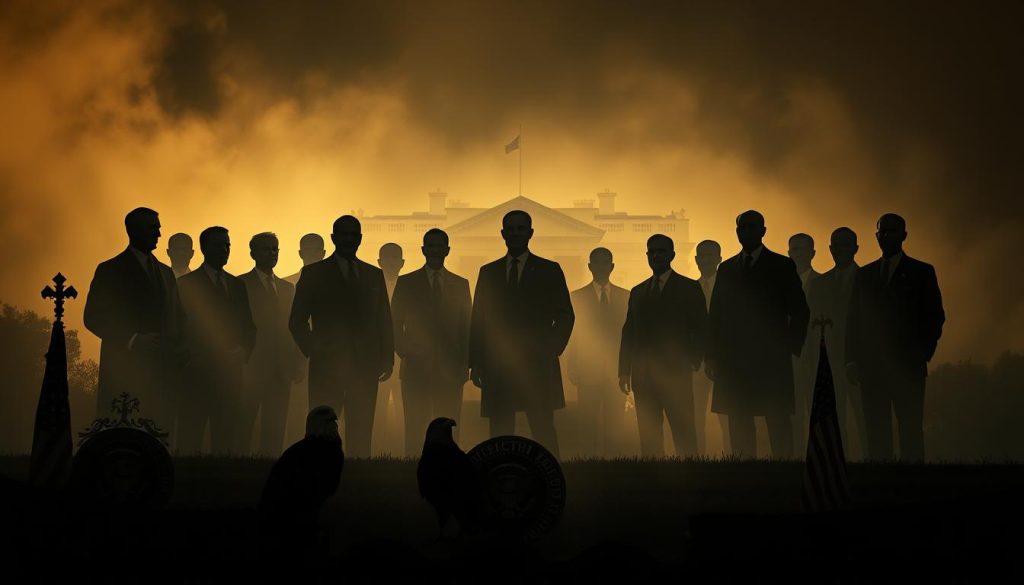
Politically, these patterns raise questions about fate and timing. Are these coincidences mere chance, or do they reflect deeper connections in American governance? Media narratives often amplify these stories, turning them into cultural touchstones that shape our understanding of the president’s role.
Here’s how these coincidences influence public perception:
- Cultural Symbolism: They become part of national folklore, influencing art, literature, and media.
- Political Commentary: Analysts use them to discuss leadership styles and historical trends.
- Public Opinion: They shape how citizens view the presidency, often adding layers of mystique or concern.
For instance, the shared tragedies of Lincoln and Kennedy have inspired countless documentaries and books. These works explore not just the events but their broader implications for American society. They remind us that leadership is as much about perception as it is about policy.
Ultimately, these coincidences invite us to reflect on the broader significance of history. They challenge us to consider how past events shape our present and future. By examining these parallels, we gain a deeper appreciation for the complexities of leadership and the enduring impact of the president’s role in shaping the nation.
Presidential Moments That Changed American History
From groundbreaking policies to bold actions, presidents have left lasting legacies. These moments not only shaped their time but continue to influence modern America. Let’s explore some of the most transformative decisions in presidential history.
One of the most celebrated moments was Abraham Lincoln’s Emancipation Proclamation in 1863. This bold move declared freedom for enslaved people in Confederate states. It was a turning point in the Civil War and a major step toward ending slavery in the U.S.
Another pivotal moment came with Franklin D. Roosevelt’s New Deal in the 1930s. Facing the Great Depression, Roosevelt introduced programs to revive the economy and provide relief. His policies reshaped the role of government in American life.
John F. Kennedy’s call to land a man on the moon in 1961 was equally transformative. This vision led to the Apollo 11 mission in 1969, showcasing American innovation and determination. It remains a symbol of what can be achieved with bold leadership.
Not all moments were celebrated. Richard Nixon’s resignation in 1974, following the Watergate scandal, marked a low point in presidential history. This event led to increased scrutiny of political leaders and reforms in government transparency.
These moments remind us of the power of the presidency. Whether through bold policies or controversial decisions, presidents have the ability to redirect the nation’s path. Their actions continue to shape the story of America, leaving a legacy that endures for generations.
The Mysterious World of Unlikely Historical Parallels
History often repeats itself in ways that seem almost scripted, especially when examining the lives of leaders. From elections to personal quirks, the stories of American presidents are filled with uncanny parallels that defy explanation. These connections, though seemingly random, often reveal deeper patterns that shape our understanding of the past.
One striking example is the shared election years of Abraham Lincoln and John F. Kennedy. Both were elected in years ending with “60”—Lincoln in 1860 and Kennedy in 1960. This fact is just one of many eerie similarities between their lives and legacies. Such coincidences raise questions about fate and the cyclical nature of history.
Another fascinating parallel involves Thomas Jefferson and John Adams. Both founding fathers died on the same day—July 4, 1826—the 50th anniversary of the Declaration of Independence. This event is a powerful reminder of how deeply intertwined history can be, even across generations.
Here’s a closer look at some of the most intriguing historical parallels:
| Event | President | Key Detail |
|---|---|---|
| Election Year | Abraham Lincoln | Elected in 1860, marked by national division. |
| Election Year | John F. Kennedy | Elected in 1960, symbolized a new era of hope. |
| Death Date | Thomas Jefferson & John Adams | Both died on July 4, 1826, the 50th anniversary of Independence. |
These parallels are more than just curiosities. They offer a deeper understanding of the lives and legacies of these influential figures. Whether it’s a shared date, a similar event, or an odd personal detail, these coincidences remind us that history is full of surprises.
Exploring these connections invites us to reflect on the broader significance of history. They challenge us to consider how past events shape our present and future. By examining these parallels, we gain a richer appreciation for the complexities of leadership and the enduring impact of the president’s role in shaping the nation.
Exploring Presidential Myths and Misconceptions
American history is rife with myths and misconceptions about its leaders, many of which have persisted for decades. These stories, often repeated as fact, can distort our understanding of the past. Let’s uncover the truth behind some of the most enduring presidential myths and reveal surprising details that challenge conventional narratives.
Debunking Common Historical Myths
One of the most famous myths is that George Washington had wooden teeth. In reality, his dentures were made from a combination of human teeth, animal teeth, and ivory. This fact highlights how even the most well-known stories can be misleading.
Another common misconception is that Abraham Lincoln wrote the Gettysburg Address on the back of an envelope. Historical records show he carefully prepared the speech in advance. These myths, while entertaining, often overshadow the true accomplishments of these leaders.
Surprising Revelations from Presidential History
Did you know that John Quincy Adams enjoyed skinny-dipping in the Potomac River? Or that Thomas Jefferson introduced macaroni and cheese to America? These quirky details remind us that presidents were people with unique habits and interests.
Here’s a table summarizing some myths and the truths behind them:
| Myth | Fact |
|---|---|
| George Washington had wooden teeth. | His dentures were made from human teeth, animal teeth, and ivory. |
| Abraham Lincoln wrote the Gettysburg Address on an envelope. | He prepared the speech in advance, drafting it carefully. |
| John F. Kennedy was the youngest president. | Theodore Roosevelt was younger when he took office. |
These revelations not only correct inaccuracies but also provide a richer understanding of the lives of these leaders. By separating fact from fiction, we gain a clearer picture of their legacies and the impact they had on history.
Conclusion
The stories of American leaders are filled with moments that seem almost too strange to be true. From shared election years to eerie parallels in their lives and deaths, these connections offer a fascinating glimpse into the quirks of history. These coincidences remind us that even the most powerful figures are shaped by unexpected twists of fate.
Exploring these astonishing facts deepens our understanding of the president’s role in shaping the nation. It also highlights how history often repeats itself in surprising ways. Whether it’s a shared date or a similar event, these moments captivate our imagination and invite us to reflect on the broader significance of leadership.
We encourage you to dive deeper into U.S. political history and uncover more hidden connections. If you found these stories intriguing, share your thoughts or explore further details. History is full of surprises—let’s keep uncovering them together!
FAQ
What are some surprising coincidences between Abraham Lincoln and John F. Kennedy?
Both presidents were elected to Congress in ’46, became presidents in ’60, and were tragically assassinated on a Friday. Their successors were both named Johnson and born in ’08.
Did Thomas Jefferson and John Adams share any unusual connections?
Yes, both men died on the same day, July 4, 1826, exactly 50 years after the Declaration of Independence was signed. They were also close friends and political rivals.
Are there any strange parallels in the lives of U.S. presidents and their families?
Abraham Lincoln and John F. Kennedy both had sons named Robert and Edward who played significant roles in their fathers’ legacies. Additionally, both families faced immense public scrutiny.
What are some odd facts about presidential inaugurations?
Lincoln’s and Kennedy’s inaugurations both featured unexpected weather events. Lincoln’s second inauguration was marked by heavy rain, while Kennedy’s was unusually sunny but bitterly cold.
Were there any unusual hobbies or traits among U.S. presidents?
Yes, for example, Gerald Ford was a skilled athlete and even modeled for a magazine. Meanwhile, Calvin Coolidge had a pet raccoon named Rebecca that he walked on a leash.
What are some lesser-known security lapses involving U.S. presidents?
Before modern protocols, presidents like Abraham Lincoln and William McKinley faced significant security risks. Lincoln’s assassination occurred despite warnings, and McKinley’s security was minimal during public appearances.
How did presidential coincidences impact American history?
These coincidences often shaped public perception and historical narratives. For instance, the eerie parallels between Lincoln and Kennedy fueled discussions about fate and legacy in American politics.
Are there any myths about U.S. presidents that have been debunked?
Yes, one common myth is that George Washington had wooden teeth. In reality, his dentures were made from a combination of human, animal, and metal materials.
What are some hidden connections between presidential legacies?
Many presidents, like Theodore Roosevelt and Franklin D. Roosevelt, shared distant familial ties. These connections often influenced their political philosophies and leadership styles.
How did peculiar presidential moments change American history?
Moments like Lincoln’s Gettysburg Address or Kennedy’s moon speech inspired national unity and progress. These speeches became defining moments in shaping the country’s future.
